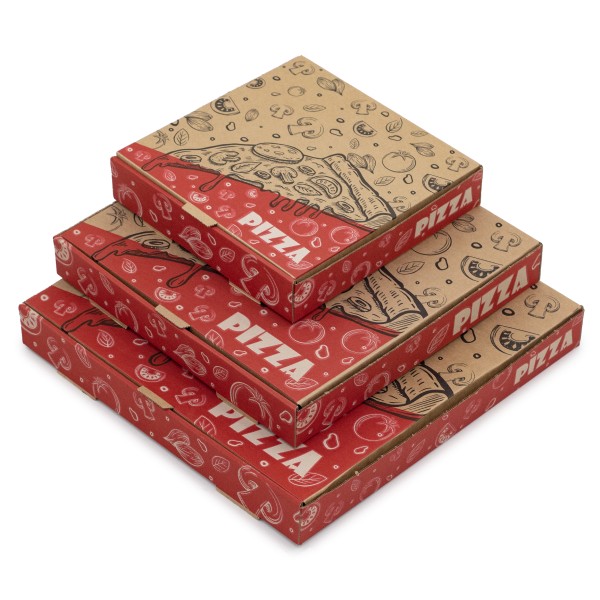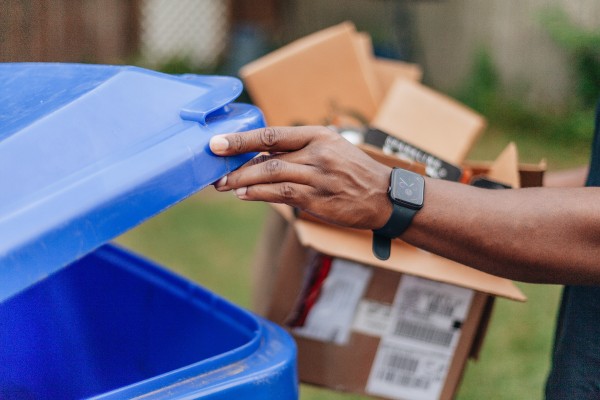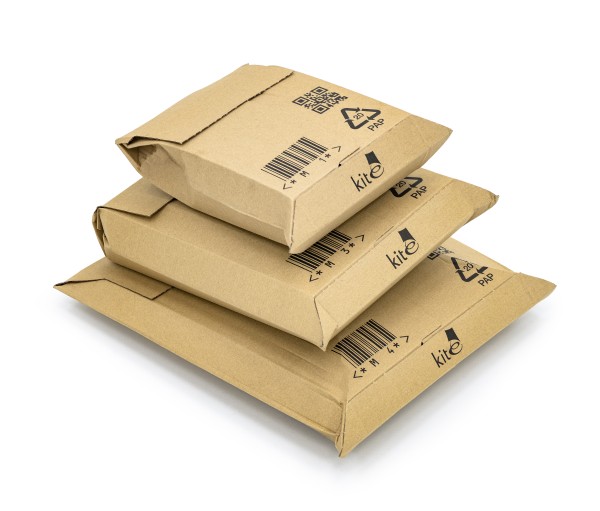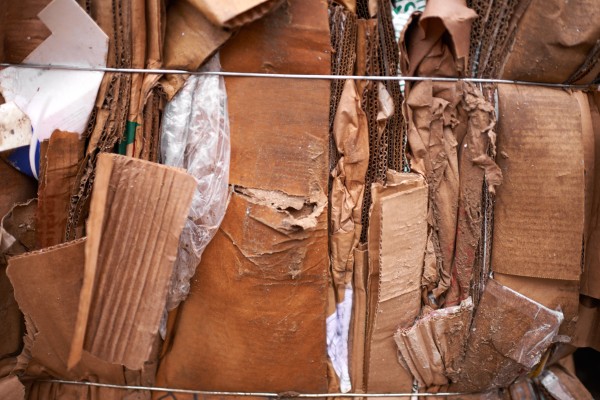Kite blog
Are Cardboard Boxes Recyclable? Everything You Need to Know in 2025
Across the UK, cardboard boxes are one of the most commonly collected forms of household and commercial waste. With millions of parcels and deliveries sent every year, the question many people still ask is: are cardboard boxes recyclable in 2025? The short answer is that most types of cardboard, including corrugated cardboard, can be placed in your household recycling bin. Once collected, they enter a well-established recycling process that transforms them into new cardboard products.

From pizza boxes and cereal boxes to large-scale commercial cardboard packaging, recycling plays a major role in reducing landfill and cutting down the need for raw materials. Clean, dry and flattened cardboard boxes are accepted by councils and recycling facilities nationwide, making them one of the most effective and environmentally friendly forms of packaging.
Our guide explains exactly how cardboard recycling works in 2025, what can and can’t go in the bin, and how both businesses and consumers can reduce their waste.
Contents
- What Counts as Cardboard vs Corrugated Cardboard
- How the Cardboard Recycling Process Works
- What Can Go in the Recycling Bin
- How Many Times Can Cardboard Be Recycled
- Business Guidance on Commercial Cardboard
- What Happens if Cardboard Gets Wet
- Common Mistakes to Avoid
- How Kite Packaging Can Help
What Counts as Cardboard vs Corrugated Cardboard
Not all cardboard is the same. The term is often used to cover different types of packaging materials, but there are key differences worth knowing.
- Paperboard – Thin, lightweight board used for everyday items such as cereal boxes and some food packaging.
- Corrugated cardboard – Made from layers of corrugated board, this is the strong and durable type used for shipping, storage, and moving boxes.
- Cardboard packaging – A broad term that can include both paperboard and corrugated materials, covering everything from small cartons to heavy-duty shipping containers.
Each type plays a role in the cardboard recycling process, though they may be handled slightly differently. Understanding the material helps both consumers and businesses dispose of their waste correctly and support better waste management.
Cardboard Boxes You See Every Day
In daily life, you’ll encounter a wide variety of cardboard boxes, many of which are fully recyclable if kept clean and dry:
- Postal boxes – Used for e-commerce deliveries and returns.
- Removals boxes – Sturdy corrugated cardboard designed for heavy loads.
- Cereal boxes – A classic example of paperboard, light and easy to recycle.
- Pizza boxes – Often recyclable, but check for food residue or grease that may contaminate recycling.
- General e-commerce packaging – From subscription boxes to retail cartons, these fall under the broad category of cardboard packaging.

Whether it’s paperboard or corrugated, these everyday items are widely collected by local recycling companies and taken to recycling facilities where they are sorted and processed into new cardboard products.
How the Cardboard Recycling Process Works
The cardboard recycling process in the UK is well established and ensures that both households and businesses can recycle packaging efficiently. Below is a clear six-step overview of how most recycling facilities handle collected material:
-
Collection
Used cardboard boxes are placed in the household or commercial recycling bin. Local councils or a recycling company then arrange regular collection from homes and workplaces. -
Sorting
Once collected, the material is taken to waste management centres. Here, it is sorted into different categories, separating corrugated cardboard from lighter paperboard and removing contaminated items such as boxes with heavy food residue or grease. -
Shredding
Clean and dry cardboard is then shredded into smaller sheets and pieces. This step makes the following stages of the process more efficient and helps to save space during handling. -
Pulping
The shredded cardboard waste is mixed with water and turned into pulp. This slurry breaks down the fibres so they can be re-formed into new cardboard products. Any plastics, tape or extra water are removed at this stage. -
Filtering and pressing
The pulp is filtered to eliminate unwanted materials before being pressed and dried into thin sheets. This is a key part of creating the raw base used by manufacturers to produce recycled cardboard. -
Conversion into new products
Finally, the dried sheets are rolled and used to create packaging such as boxes, cartons and other cardboard products. These are then distributed to companies and consumers, completing the cycle.
This six-step system helps reduce landfill, lowers energy consumption, and ensures that clean cardboard can be recycled into useful items time and again.
What Can Go in the Recycling Bin

Most councils across the UK accept paper and cardboard packaging in the household recycling bin, provided it is clean, dry, and free from heavy food residue or grease. A quick check before you recycle:
- Remove any tape, plastics, or labels where possible
- Flatten cardboard boxes to save space in the bin
- Keep wet cardboard aside, as it cannot be processed in the same way
Following these steps ensures that the recycling process runs smoothly and that your cardboard waste can be reused effectively.
Cereal Boxes
Delivery Boxes
Mailers

How Many Times Can Cardboard Be Recycled
The number of times cardboard can be recycled depends on the strength of its fibres. On average, fibres can go through the cardboard recycling process around five to seven times before becoming too short to reuse. Each cycle gradually weakens the cardboard fibres, which is why new cardboard is often blended with recycled pulp to maintain durability.
Business Guidance on Commercial Cardboard
For businesses, managing commercial cardboard responsibly is key to cutting waste and meeting sustainability goals. Here’s a quick checklist:
- Store boxes in a dry space to prevent contamination from wet cardboard
- Flatten and, where possible, bale large volumes to save space
- Arrange collection through a trusted recycling company or local waste management provider
- Keep different materials separate, removing plastics and tape
- Use official recycling facilities to ensure proper processing
With the UK already achieving high paper and cardboard recycling rates, companies can be confident that their cardboard packaging is being recycled efficiently and contributing to a more sustainable environment.
What Happens if Cardboard Gets Wet
Wet cardboard loses strength and is difficult to recycle. Recycling facilities often reject it because the fibres weaken and require extra water during pulping. If it has dried out and is clean, it can sometimes go back into the recycling process, but heavily soaked or contaminated boxes usually end up as waste.

Common Mistakes to Avoid
Even with high UK cardboard recycling rates, mistakes can cause good material to become waste. Some of the most common errors include:
By avoiding these issues, both consumers and businesses can ensure more material is recycled into new products, reducing waste and lowering landfill use.
- Forgetting to remove tape, labels, or plastics before putting boxes in the recycling bin
- Failing to flatten cardboard boxes, which takes up space in your bin and complicates the collection process
- Mixing contaminated food packaging, such as greasy pizza boxes, with recyclable material
- Putting wet cardboard in with clean, dry paper and packaging
How Kite Packaging Can Help

Managing cardboard waste effectively benefits both the environment and your bottom line. At Kite Packaging, we supply a wide range of cardboard boxes, corrugated cardboard packaging, and other sustainable solutions designed to support both households and companies with their recycling goals.
Not sure how your business should handle its commercial cardboard? Contact Kite Packaging at EPR@kitepackaging.co.uk or call 02476 420065 for expert guidance on waste management, cardboard recycling, and environmentally friendly packaging solutions.
